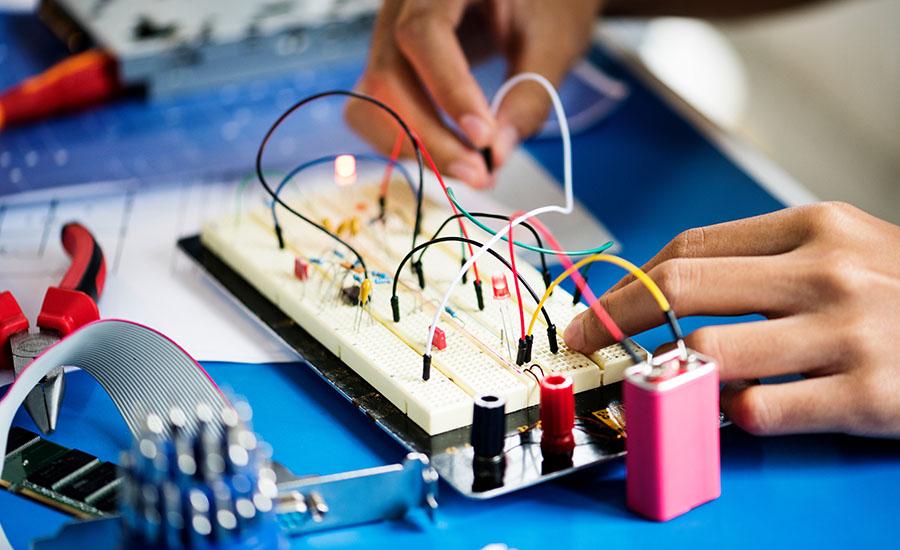Involving themes of biology, ecology, and conservation, this engineering lesson introduces students to the behavior of immersed bodies within the realm of fluid mechanics. Utilizing the phenomena of
Students will explore how gravity plays a role in orbits and the attraction between objects in space, using online simulations. In addition to the online simulations this lesson contains ideas for
Students will be using simple equipment to demonstrate the 3 laws of motion. They will be incorporating technology, math, and the scientific method to demonstrate what they know.
Part one of a four part project exploring the movement of the brain upon impact in everyday activities. This lesson uses Pocketlab Voyager sensors to analyze brain movement in high impact activities
Students are introduced to the concept of nanotechnology with a small group research activity about the different industries using nanotechnology.
This lesson uses a PhET Simulation to allow students to collect data on the orbits of planets around our Sun, then summarize and share their results. It is designed for students in Grades 9-12.
Students have the opportunity explore different materials that use nanotechnology and then discuss the key differences between macroscale and nanoscale impacts on those materials.
In this lesson, students use the Kepler’s Laws PhET Simulation to collect data on the period and average radius of the planetary orbits. They graph and analyze that data to derive Kepler’s 3rd Law.
This 45-minute lesson uses the book, "How to Catch an Elf", to lead into a cooperative engineering design lesson where students work in teams to build a humane trap to capture an elf.
Predicting the pH of an experiment - this is a more of an advanced lab for students that have lab experience or can be used as a demonstration by the teacher. Calculating Molarity. Great pre-lesson to
Students will learn about the difference between potential and kinetic energy by building a ramp. Three objects will be tested down the ramp to see which one can go the farthest. Data will be
In this engaging lesson, students will use cams to practice data collection and graphing skills. A variety of resources are built into this lesson including a slow reveal graph with directions, videos
This lesson is intended to be the second lesson within a series. After the first lesson, exploring the transfer of power within a system, Students utilize this lesson, lesson 2, to explain how and
This lesson is designed for students to conduct research in teams to create the best catapult that can launch a mini dog bone the farthest. Students use the engineering design process to create their
Students will create flying helicopter models to change the movement and motion by changing different variables. Changing the movement of an object requires a net force to act upon it. This lesson
A thermos is a must-have device for anyone who wants to enjoy hot or cold beverages on-the-go. It is a simple yet ingenious invention that utilizes scientific principles to keep our drinks at the
Students will use empty soda bottles and a heat lamp to model the greenhouse effect that is essential for life on Earth. They will collect data and use it to create a graph of their findings.
This STEM lesson is all about foam gliders, aerodynamics, and the engineering design process. Students will explore flight through foam gliders and then use what they learn to plan and construct their
Using the Engineering Design Process, students will design and create a marble maze out of cardboard and cardstock, making sure to include all the required elements. They will then create an air
Featured Lesson Plans
Check out these notable lesson plans.

In this outstanding lesson, students will explore circuitry through working collaboratively to build a working floor piano out of simple materials. Students explore the engineering design process by

STEM in the Garden- Wild Bee Hotel
Third grade students will apply their knowledge of the significance of bee pollination by designing and creating a Wild Bee Hotel in a collaborative group which will incorporate literacy, mathematical

In this outstanding lesson, students will apply their knowledge of how natural and human-caused changes to habitats or climate can impact our world in a stop motion film. The lesson covers a Science


